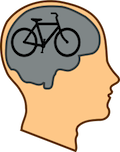 Remember when you learned to ride your first bicycle? It wasn’t easy. You fell down a lot, but you kept trying. At first you needed someone to hold on, keeping you steady. Then you used training wheels to help you stay upright as you pedaled. Then, finally, you were able to ride on your own. You had found that complicated thing called balance. After that, it was a breeze! The process of writing songs is a lot like riding a bike. It’s all about finding a balance!
Remember when you learned to ride your first bicycle? It wasn’t easy. You fell down a lot, but you kept trying. At first you needed someone to hold on, keeping you steady. Then you used training wheels to help you stay upright as you pedaled. Then, finally, you were able to ride on your own. You had found that complicated thing called balance. After that, it was a breeze! The process of writing songs is a lot like riding a bike. It’s all about finding a balance!
=> Balance Melody, Chords, Lyrics – Writing a song that listeners will love involves finding a good balance between melody, lyrics, and chords. If you have a busy lyric with a lot of words and images then writing a melody that’s easy for listeners to follow might make it easier for them to understand and remember the song. It gives your song a chance to make a greater impact. When there’s too much going on, listeners miss important moments and they may just tune out.
The Singer-Songwriter genre, for example, is often lyric heavy and you’ll notice that, while the melodies make use of interesting phrase lengths and phrase starts, there are plenty of repeated melody patterns — lines repeated in sets of two, three, or four, organizing the melody so listeners can take it in easily while focusing on the lyrics. An extreme example of balance between lyrics and melody can be heard in the Rap genre. Lyric content and lyric rhythm have taken over, while the melody notes have become almost a monotone.
On the other hand, if you have a complicated melody with a lot of rhythmic interest and interval jumps, try keeping your lyric straightforward and easy to follow, maybe use more repetition in your chorus lyric than you normally would.
A good rule of thumb: As the attention-grabbing quality of one of your song elements goes up – lyrics, melody, or chords – think about lowering the others. This doesn’t mean the other elements should become simple and predictable. Instead, try organizing them in patterns or using more repetition so listeners can focus on the more complicated things.
=> Study the balance in your genre – Each genre has a balance of melody, lyrics, and chords giving it a characteristic sound. For instance, the Pop genre tends to have plenty of melodic interest while keeping lyrics focused on an emotion, asking listeners to FEEL the lyrics rather than think about them. The Country genre, on the other hand, relies on lyric stories with plenty of physical detail. Listeners need to pay attention to the lyric in order to get the full impact. As a result, melodies tend to be a little less complex than in the Pop field. This doesn’t mean you can write a boring melody! You’ll still need to keep your listeners interested. But you might want to use fewer melodic twists than you would in the Pop genre.
=> Balance craft and inspiration – Balance is also an essential part of your approach to songwriting as a whole. Finding a balance between inspiration and song craft can help you express your deepest thoughts and feelings and in a way that listeners can understand and respond to.
Inspiration is the heart of your songwriting. It’s what guides you, tells you what’s important, and delivers that brilliant line out of the blue. But inspiration can be a very personal thing and it may not always be there when you need it. Sometimes it can even deliver inspired lines for a different song! But, if you balance it with a good amount of song craft, you can get the most from your inspiration, communicating effectively and surrounding those inspired gems with lines that support them.
=> It takes time to find your balance – Just like riding a bicycle, it takes practice to learn what good songwriting balance feels like. When you learn a new melody or lyric writing technique, don’t expect to immediately fold it into your songs and smoothly ride off into the sunset. There’ll be some wobbles and falls. You might scrape your knees a few times. But, just like you did when you were a kid, get back up on your bike and try again. Once you get the feel, you’ll be flying down the sidewalk with the wind in your hair in no time!
=> Get some training wheels – The best songwriting “training wheels” are hit songs. These songs already have good balance, the kind that listeners are comfortable with. This week, learn how to play and sing one recent hit song that you like. (You can find the current radio charts at BDSradio.com.) Notice the balance between lyrics, melody, and chords. How is the melody organized? Which melody lines are repeated and how many times? When do the lyrics simply repeat and when do they demand attention? Try writing a song with a similar type of balance.
Best of all, like riding a bike, once you learn what balance feels like you never forget!
by Robin Frederick
Robin Frederick has written more than 500 songs for television, records, theater, and audio products. She is a former Director of A&R for Rhino Records, Executive Producer of 60 albums, and the author of “Shortcuts to Hit Songwriting” and “Shortcuts to Songwriting for Film & TV” available at Amazon.com. Visit Robin's websites for more songwriting tips and inspiration: www.RobinFrederick.com and www.MySongCoach.com.

